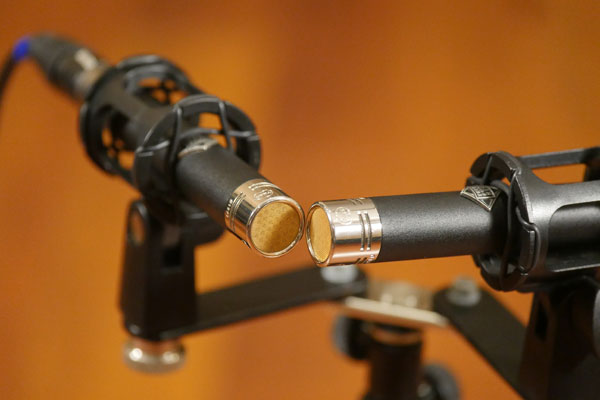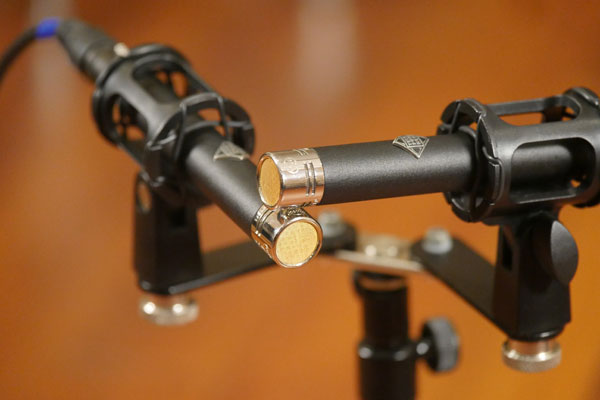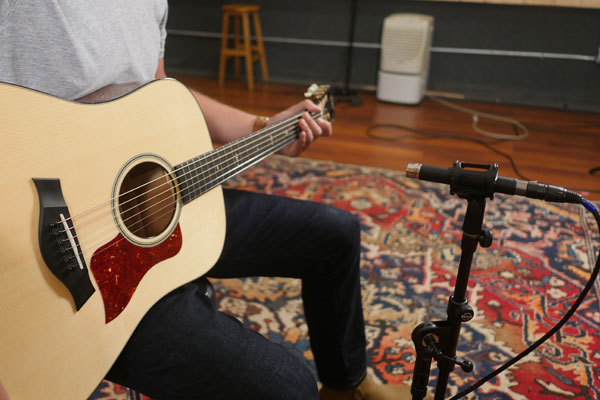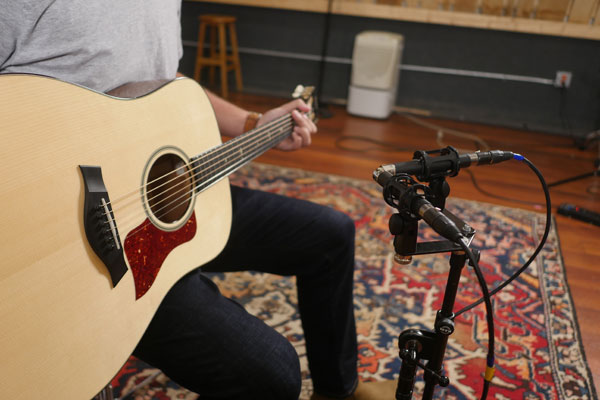In this episode of Gear Tips, Sound Pure pro audio specialist Doug Wessling walks us through three methods used to record an acoustic guitar.
The first and simplest way to record an acoustic guitar is to use a single microphone for a mono recording. This can be done with a small or large diaphragm condenser microphone placed where the neck of the guitar meets the body. The microphone can be moved up, down, in, out, or rotated to change the angle. This decision will be made based on personal preference by using your ears. Using your ears to find the sound that you want is a common theme in all three methods of recording an acoustic guitar. A good starting point would be placing the microphone about 10-12 inches away. If this method does not have the fullness your ears are looking for, then you will want to try the XY recording technique that will give you more of a stereo sound.
The XY method of recording involves the use of two microphones. The positioning of the microphones should be at 90 degrees with one capsule facing the sound hole, and the other capsule facing the neck joint. To obtain the 90-degree angle, the two microphones can be placed side by side or one on top of the other. Once here, you can use your ears to re-position the microphones to get the sound that you want! Now that the mics are positioned, the recordings can be panned left and right to add depth to the sound. The benefit of using the XY technique is that there will not be any phase issues with the recording. Phase means that there is a time difference between the source and the two microphones. When this happens, you will find that the treble and/or the bass of each microphone will be different from one another. This typically sounds OK or even great in stereo, but when you move to mono the sound will lose definition, detail, and sound hollow. The two microphones placed side by side or on top of one another form a coincidental pair which eliminates the issue of phase as the sound reaches the microphones at the same time. If you are recording a guitar for a less dense mix, and want that larger than life sound, then the final technique of AB recording could be what your ears desire.
An AB spaced pair will give you a recording that really stands out in a mix as the two mics once panned can give you a very different sound. The first microphone is placed at the neck joint just like the previous two methods giving you a tighter sound. The second microphone is placed overhead pointing at the soundhole or the body of the guitar giving you a bigger, deeper sound. The second microphone can be the same as the first, or a different model altogether such as a ribbon mic or a large diaphragm condenser mic. If you change the type of microphone, it will make the stereo image even bigger once they are panned and blended together! Since the microphones will have different distances from the source, one issue that you may encounter while using the AB method is phase. While the textbook might say that is a bad thing, your ears might like the sound and at the end of the day, that’s what matters! This AB spaced pair style of recording is going to give you a wider stereo image and have more depth. The X/Y method is the more traditional method which will also be more flexible in the mix down the road.
If you have any questions about these tips or any other issue, please give us a call!






